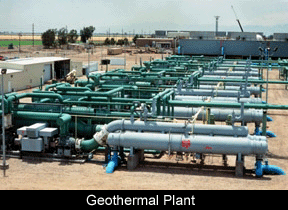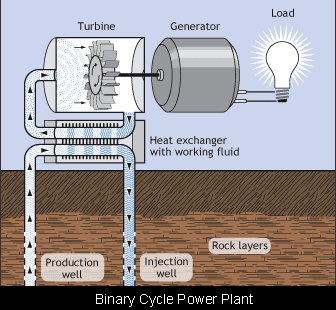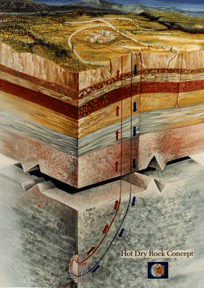Geothermal energy is heat generated naturally from beneath the Earth’s surface. It’s clean and sustainable. It is believed that the ultimate source of this energy is radioactive decay occurring deep within the earth. These energy resources range from the shallow ground to hot water and hot rock found a few miles beneath the Earth’s surface, and down even deeper to the extremely high temperatures of molten rock called magma.
These plants take advantage of the heat from the earth’s interior to produce electricity. The plants do not require much space for production and do not burn fossil fuel, making them very environmentally friendly. Electricity was first produced using this renewable source at Larderello, Italy, in 1904. Since then, the use of geothermal energy for electricity has grown worldwide to about 8,000 megawatts of which the United States produces 2,700 megawatts.
Petratherm is now actively drilling and exploring hot rock areas to produce electricity in Australia, China and Spain. Geodynamics is Australia’s largest ASX listed company entirely focused on developing geothermal power stations from hot fractured rocks.

Four types of power plants are used to generate power using this energy source: Dry steam, salt, flash, and binary. Dry steam plants take steam out of fractures in the ground and use it to directly drive a turbine that spins a generator. Flash plants take hot water, usually at temperatures over 200°C (392°F), out of the ground, and allows it to boil as to rises to the surface then separates the steam phase in steam/water separators and then runs the steam through a turbine. In binary plants, the hot water flows through heat exchangers, boiling an organic fluid that spins the turbine.

Most geothermal areas contain moderate-temperature water below 204°C (400°F). Energy is extracted from these fluids in binary-cycle power plants. Hot fluid from the earth and a secondary (hence, “binary”) fluid with a much lower boiling point than water pass through a heat exchanger. Heat from the earth causes the secondary fluid to flash to vapour, which then drives the turbines. Because this is a closed-loop system, virtually nothing is emitted to the atmosphere. This is the reason why geothermal energy is viewed as sustainable. Moderate-temperature water is by far the more common resource, and most power plants in the future will be binary-cycle plants. The heat of the earth is so vast that there is no way to remove more than a small fraction even if most of the world’s energy needs came from underground sources.

The high technological challenges and cost of drilling over 3 kilometres (1.8 miles) below the Earth’s surface means research in this field is very expensive. Before this type of electricity can be considered a key element of the energy infrastructures, it must become cost-competitive with traditional forms of energy. However, this form of energy has the potential to contribute significantly to power generation facilities in many parts of the world.
